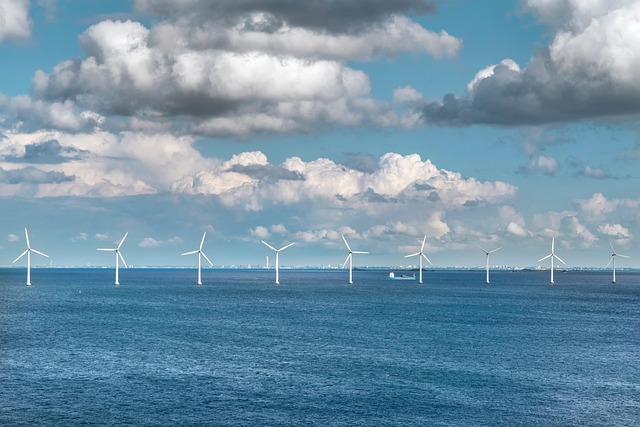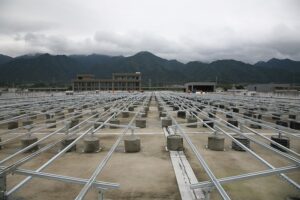
Clean Energy Revolution: How Innovation is Shaping Sustainability
The world stands on the precipice of a significant transformation, one that could redefine our energy landscape for generations to come. The Clean Energy Revolution is not merely a response to climate change but a strategic shift towards sustainable practices that embrace innovation in technology, policy, and consumer behavior. As global energy demand continues to rise, the call for cleaner, more sustainable energy sources has never been more urgent. This article explores the driving forces behind the clean energy revolution and examines how innovation is pivotal in paving the way towards a more sustainable future.
The Need for Clean Energy
Climate change, air pollution, and the depletion of natural resources present pressing challenges that demand immediate action. Fossil fuels, while historically indispensable for powering economies, have proven detrimental to the environment. The adverse impacts of carbon emissions and greenhouse gases have catalyzed a worldwide shift towards clean energy alternatives, which promise not only to reduce emissions significantly but also to provide energy security and economic stability.
Renewable energy sources, such as solar, wind, hydroelectric, and geothermal power, offer viable solutions to escape the cycle of dependency on fossil fuels. Harnessing these resources not just promotes environmental sustainability but also fosters energy independence and resilience against volatile fossil fuel markets.
The Role of Innovation in Clean Energy
At the heart of the clean energy revolution lies innovation, which manifests in various forms—from state-of-the-art technology to novel business models and regulatory frameworks. The breakthroughs in clean energy technology are making renewable sources more efficient, accessible, and cost-effective.
Advancements in Renewable Technologies
One of the most significant innovations in recent years has been the exponential growth in renewable energy technology. The cost of solar panels, for example, has decreased dramatically, making solar energy an economically competitive option in both residential and commercial applications. Improvements in photovoltaic cell efficiency continue to enhance energy production, allowing solar energy to be generated in previously unfeasible locations.
Wind energy has also seen remarkable advancements. Larger, more efficient wind turbines and the development of offshore wind farms have increased the feasibility and scalability of wind power, providing substantial energy output with minimal ecological impact. Additionally, research into improved energy storage solutions, such as advanced battery technologies, is crucial for managing intermittent renewable energy sources, ensuring the reliability of power supply, and integrating renewables into the existing grid.
Smart Grid and Energy Management Systems
The evolution of energy management systems and smart grid technology plays a vital role in optimizing energy use. Smart grids utilize digital technology to enhance the efficiency, reliability, and sustainability of electricity services. They enable two-way communication between utilities and consumers, allowing for real-time data exchange that improves grid reliability and reduces energy losses.
Furthermore, smart meters can provide consumers with detailed insights into their energy consumption patterns, fostering more responsible energy use and enabling demand response programs. Innovations in this area empower users not only to adapt their behavior but also to take control of their energy resources, generating a more engaged and informed public.
Decentralization of Energy Production
Another compelling narrative in the clean energy revolution is the decentralization of energy production. Traditionally, energy generation has relied heavily on centralized power plants. However, advances in microgrid technology and distributed energy resources are facilitating a shift towards localized energy generation. Solar panels installed on rooftops or community wind projects enable households and neighborhoods to produce and consume their own energy, contributing to grid resilience and reducing transmission losses.
Such decentralization minimizes reliance on traditional utility companies and opens up opportunities for collaborative consumption and community-driven initiatives. This shift engenders not only a new economic model but also demonstrates the power of collective action in addressing climate change.
Policy and Economic Drivers
Innovation in clean energy is not solely a technological affair; it is deeply tied to the policy landscape and economic trajectories. Governments worldwide are implementing various incentives, including tax credits, grants, and renewable portfolio standards, to promote clean energy adoption. These policies are essential for creating favorable conditions for renewable energy markets to flourish.
Global Agreements and National Commitments
The Paris Agreement, aimed at limiting global warming to well below 2 degrees Celsius, serves as a crucial catalyst for clean energy innovation. Countries are not only setting ambitious climate goals but are also incentivizing the development of sustainable technologies to attain these targets. As nations commit to reducing greenhouse gas emissions, investments in renewable infrastructure and research become critical.
Investment and Economic Growth
Investment flows are shifting dramatically, with clean energy now attracting more capital than fossil fuels in many regions. Financial institutions are increasingly recognizing the long-term risks associated with fossil fuel investments, prompting them to divert funding towards renewable projects. Venture capital and private equity are fuelling innovation and entrepreneurship in the clean tech sector, creating jobs and economic growth.
The Role of Consumers in the Clean Energy Transition
In addition to policy and innovation, consumers play a pivotal role in driving the clean energy revolution. As awareness of climate change rises, more individuals seek sustainable solutions for their energy needs. This shift in consumer behavior pressures industries to adopt renewable energy sources and implement eco-friendly practices.
Consumer choices are being shaped by various factors, including ethical considerations, carbon footprints, and energy efficiency. People are opting for electric vehicles, energy-efficient appliances, and renewable energy contracts, gradually reshaping market dynamics.
The Rise of Community Solar Projects
Community solar projects illustrate how consumer engagement can accelerate the clean energy transition. These initiatives allow multiple households to invest in and benefit from a shared solar energy system. They provide an accessible way for individuals who cannot install solar panels on their properties, such as renters, to participate in the solar economy and lower their carbon footprints.
Challenges Ahead
Despite the remarkable progress towards clean energy, significant challenges remain. One major hurdle is the need for infrastructure upgrades to accommodate an increasing share of renewable energy in the energy mix. Moreover, the transition requires rethinking workforce development to equip individuals with the skills necessary for jobs in the renewable energy sector.
Regulatory frameworks must evolve to facilitate the integration of new technologies and business models while ensuring a fair and equitable energy transition. Balancing energy equity with sustainability goals is paramount, preventing low-income communities from being disproportionately affected during the transition.
The Path Forward: Collaborating for a Sustainable Future
The clean energy revolution is a collective endeavor that necessitates cooperation among governments, businesses, consumers, and academic institutions. By fostering partnerships across sectors, society can leverage diverse expertise and resources to expedite the transition towards a sustainable, low-carbon future.
Innovation will continue to be the driving force behind this movement, catalyzing new ideas and solutions to the challenges that lie ahead. As the world grapples with the implications of climate change, the clean energy revolution holds the promise of not just a response to an urgent crisis but an opportunity for reinvention—a chance to create sustainable economies while protecting our planet for future generations.
Conclusion
The clean energy revolution stands as one of the most significant developments of our time, ushering in an era of sustainability driven by innovation. As renewable technologies advance, policies align, and consumer preferences evolve, the frameworks to support a sustainable future solidify. By embracing this revolution, humanity has the opportunity to build a resilient energy system that not only meets current demands but does so in a manner that respects and preserves our environment. The journey towards sustainable energy is complex, but the rewards are invaluable, paving the way for a cleaner, greener, and more equitable world.



